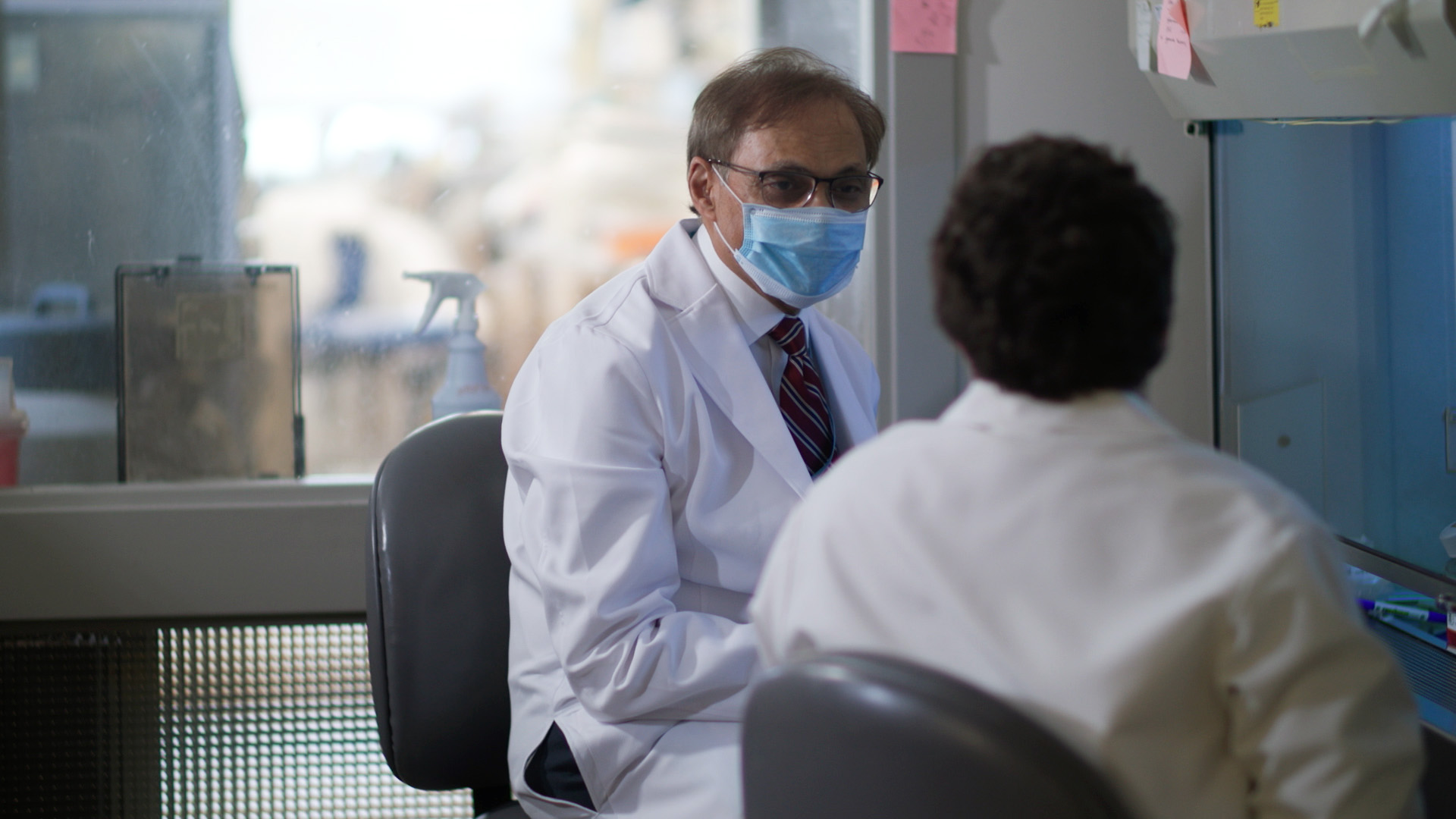
Popular Locations
- Yale New Haven Children's Hospital
- Yale New Haven Hospital - York Street Campus
- Yale New Haven Hospital - Saint Raphael Campus

Published August 10, 2021

Nathaniel Kleytman, 24, is assisting in an internationally recognized clinical research lab before he heads off to medical school — but that’s just a slice of his turnaround story. Understanding why his achievements hold great significance for the rare disease community requires looking back to his childhood.
At five years old when children are skinning knees on the playground, Nate was seeing doctors for pain, bruising and excessive bleeding.
“It became normal for me to miss school for bone pain so unbearable that the only solution was surgery where I was cut open and my joints drained of pus,” said Nate. “As a child I wanted to play, to participate in recess, but I was told something would happen if I did. You can’t imagine the impact that has on a child.”
Nate was diagnosed with everything from cancer to osteomyelitis (bone infection), growing pain, osteoporosis and clotting disorder. He went through several surgeries. He met with doctors who were sure their wrong diagnosis was right and doctors who called him an enigma.
Nine years into his diagnostic odyssey a bone biopsy was performed to look for cancer. It came back positive for Gaucher disease, a rare genetic disorder. The condition is named after French physician Philippe Gaucher (pronounced gow-shay) who first described the disease in 1882.
People with Gaucher disease lack the enzyme to break down a molecule called glucocerebroside. Cells, especially macrophages – the cells responsible for eliminating damaged cells and maintaining proper immune functions – become engorged with glucocerebroside. The molecule overwhelms the macrophage, turning it into what is called a Gaucher cell. These Gaucher cells accumulate in bone marrow, the liver and spleen. Once there, they cause inflammation and scar tissue responsible for many of the symptoms of Gaucher disease, including bone pain, swelling of the liver and the spleen, osteoporosis, painful bone crises, anemia, low platelet counts, fatigue, easy bleeding and bruising.
Early diagnosis and treatment of all types of the disease are vital to maintain good health and prevent disability. This can be done through a blood test that measures enzyme activity and a genetic test.
“I felt more panic than excitement,” said Nate. “When you hear genetic disease there is a stigma behind it, so it was scary for my family. We got the diagnosis confirmed by a geneticist. The world blurred behind me as I received the information in a white void until I was smacked with feelings of inadequacy.”
There are approximately 6,000 people with Gaucher disease in the United States. It cuts across ethnicities, but it is more common in people of Ashkenazic Jewish decent, where the incidence may be as high as 1 in 450 births.
Nate’s mother attended a Gaucher patient meeting where she met Pramod Mistry, MD, a specialist in inherited metabolic liver disease at Yale New Haven Hospital and director, Yale Gaucher Lysosomal Disease Center. She immediately got Nate into Dr. Mistry’s care.
“A genetic disease in a family can unleash an incredible strength,” said Dr. Mistry, who has been treating families for 30 years. “However, I learned quite late in my career about the trauma the whole family experiences shuttling to different doctors and thinking they passed on bad genes to their loved ones. Every human on this planet is a carrier of several dozen genetic diseases. I would like to remove the label of genetic disease when I discuss this condition. The psychological burden shouldn’t be any more than (having) high cholesterol.”
Gaucher is not yet curable, but most types are treatable. Nate’s delayed diagnosis has caused lasting scars, however today he experiences no Gaucher symptoms thanks to regular infusions of a genetically engineered enzyme.
A crucial danger of Gaucher is lack of awareness. People can wait five years or more before receiving an accurate diagnosis. Additionally, not many physicians have experience treating Gaucher disease.
In response to the need in northern Westchester County, NY, Dr. Mistry expanded his practice from New Haven and Stamford, CT to New Rochelle, NY. The New Rochelle location makes it easier for patients to access care, including people who travel from all parts of the United States and the world to see Dr. Mistry.
The Yale Gaucher Lysosomal Disease center is integrated with a Northeast Medical Group Obstetrics and Gynecology practice, as many women with Gaucher disease are first diagnosed during pregnancy because of low platelet counts. Ensuring safe pregnancy for mother and child requires close collaboration between the obstetrician and Gaucher doctors. Additionally, Dr. Mistry offers genetic testing which can identify risk early and develop a plan for the baby’s testing and treatment.
“As a future physician, my goal is to make sure no one goes through what I went through,” said Nate, whose lab work involves studying a new treatment for Gaucher disease that could minimize the need for infusions. “If I can prevent one surgery, one child from being limited – one person from feeling the internalized-generational shame of having a genetic disorder, I will have done my job.”